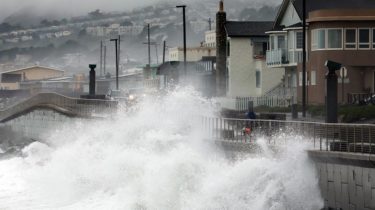Rising ocean levels on track to obliterate the homes of 300 million individuals by 2050

Rising ocean levels are on track to influence around multiple times a larger number of individuals by 2050 than initially suspected. New research proposes that 300 million homes will be influenced by seaside flooding in the following 30 years.
Also, that number could ascend to 630 million constantly 2100 if carbon discharges don’t diminish. New gauges mean rising oceans will cause more harm, cost more cash and effect a larger number of networks than any other time in recent memory.
As per an examination by Climate Central distributed Tuesday in Nature Communications, land lodging 300 million individuals will flood every year by 2050. Furthermore, high tides may forever transcend land home to 150 million individuals.
The new numbers far outperform the past gauge of 80 million.
Ocean level ascent is an aftereffect of warmth catching contamination from human exercises, which causes ice sheets and ice sheets to dissolve, expanding the volume of water in the seas. It improves the probability of beach front flooding, which can harm framework, decimate crops and compromise whole urban communities. In view of human exercises, ocean levels could ascend between around 2 and 7 feet during the 21st century, or conceivably much more.
Most of the individuals influenced live in Asia — with the best dangers confronting terrain China, Bangladesh, India, Vietnam, Indonesia and Thailand. In those locales, 54 million a bigger number of individuals will be influenced than recently suspected, carrying the aggregate to 237 million individuals.
“In the decades ahead, sea-level rise could disrupt economies and trigger humanitarian crises around the world,” Climate Central said.
Indonesia is as of now encountering the impacts of expanded flooding — the administration as of late reported designs to move the capital city from Jakarta to Borneo. Jakarta, which sits on the island Java, is the quickest sinking city on the planet.
As per a public statement, specialists determined beach front rise utilizing satellite readings, the standard method to gauge ocean level ascent. In any case, they utilized man-made reasoning to represent known missteps in past NASA models, which would in general overestimate rise.
“These assessments show the potential of climate change to reshape cities, economies, coastlines, and entire global regions within our lifetimes,” said Dr. Scott Kulp, lead author of the study. “As the tideline rises higher than the ground people call home, nations will increasingly confront questions about whether, how much, and how long coastal defenses can protect them.”
New examinations uncover that around 110 million individuals effectively live ashore that falls beneath the momentum elevated tide line — contrasted with the 28 million recently assessed — likely secure by waterfront barriers here and there. 250 million individuals live ashore beneath current yearly flood levels — contrasted with the 65 million recently thought.
What’s more, the new report is still on the hopeful side — it accept nations fulfill the time constraint for emanations cuts delineated in the Paris understanding. Nations are not right now on track to comply with that time constraint.
“For all of the critical research that’s been done on climate change and sea-level projections, it turns out that for most of the global coast we didn’t know the height of the ground beneath our feet,” said Dr. Benjamin Strauss, co-author of the study. “Our data improve the picture, but there is still a great need for governments and aerospace companies to produce and release more accurate elevation data. Lives and livelihoods depend on it.”
“The world’s coasts are more vulnerable to climate change than we ever thought,” Peter Girard, director of communications for Climate Central said. “With all the research available on rising seas, we knew surprisingly little about the height of the land beneath our feet. Now that we have a clearer picture of how much more land — and how many more people — may face severe coastal flooding in the foreseeable future, we can see not only what we stand to lose but also what we have to gain by reducing emissions and avoiding the worst sea-level rise projections.”
“As shocking as these findings might be, there is a silver lining: They give us the knowledge we need to take action in time to protect millions, and to avoid the economic and political upheaval that a climate disaster on this scale could bring,” they said.
The analysts said that in a low-carbon discharges situation, implying that emanations top by 2020, nearly 190 million individuals will have homes underneath anticipated ocean levels for 2100. In a high-emanations situation, which means outflows keep on ascending through the 21st century, up to 640 million individuals will be influenced.
A U.N. environmental change report discharged in September additionally featured the serious outcomes of rising waters.
“Extreme sea-level events, such as surges from tropical cyclones, that are currently historically rare (for example today’s hundred-year event) will become common by 2100 under all emissions scenarios due to increasing global mean sea level rise,” the report stated. “Under all future emissions scenarios, many low-lying megacities and small islands at almost all latitudes will experience such events annually by 2050.”
Packers Herley writes books, which, considering where peoples are reading this makes perfect sense. He’s best known for writing articles on science and technology. Now he works an author in Digest Express .
Disclaimer: The views, suggestions, and opinions expressed here are the sole responsibility of the experts. No journalist was involved in the writing and production of this article.
